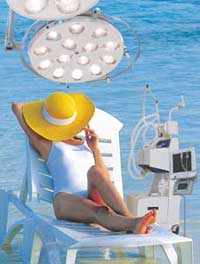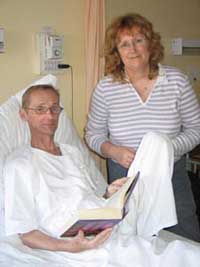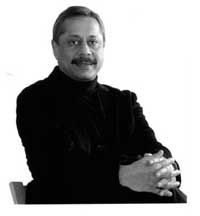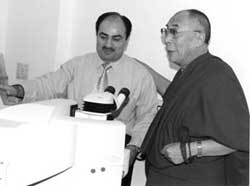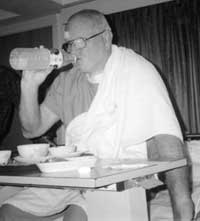Life
MRI Tourists

|
Today’s new intrepid travelers to India are not headed for the Taj Mahal or the burning ghats of Benares, but for some of the country’s best hospitals.
Forget camels and tigers and snakes. The new tourists to India are searching for quite a different kind of animal – everything from ground-breaking robotic heart surgery to liver transplants to total hip and knee replacement procedures. Yes, these intrepid travelers are not headed for the Taj Mahal or the burning ghats of Benares, but for some of the best hospitals in India. It was bound to happen. Medicine is one of the oldest professions in India and Sushrata, the father of surgery, was conducting complicated surgical procedures, such as plastic surgery and brain surgery 2,500 years ago, when much of today’s so called “First World” was running around in animal skins! Charaka, the father of medicine, gave the world the principles of Ayurveda 2,500 years ago and in that ancient world, there was detailed knowledge of every science, including physiology, embryology and genetics. Ancient texts mention everything from cataracts to artificial limbs and Cesareans. It could well be that Charaka, who wrote the Charaka Samhita, a physician’s handbook of sorts reportedly in 500 BC, beat Hippocrates (460-377 BC) as the world’s first physician. He defined the major disciplines of Ayurveda: Shailya Chikitsa (surgery), Shaalakya Chikitsa (head, eye, nose, throat), Kaaya Chikitsa (mental health), Kaumarbhrutya Chikitsa (pediatrics), Agada Tantra (toxicology), Rasaayana Tantra (Pharmacology), and Vaajeekarna Tantra (reproductive medicine).
Indians seem to have a genetic leaning towards medicine: after all, what else could explain the volume of Indian doctors around the world from Hong Kong to Europe and the Middle East? The U.S. alone has 30,000 physicians of Indian origin, who constitute almost 5 percent of all U.S. physicians. In fact, it is estimated that India churns out 20-30,000 new physicians every year. India’s medical industry boasts 1 million physicians, 16,000 hospitals, 162 medical colleges, 100 dental colleges and 82 nursing colleges. According to a study by the Confederation of Indian Industry and McKinsey Consultants, last year 150,000 foreigners visited India for treatment and the number is slated to rise 15 percent a year. By the year 2012, medical tourism is estimay to become a $2.3 billion industry. NRIs across the diaspora, of course, have long taken advantage of India’s potential for health tourism, without quite knowing it. Why not visit amma and get that root canal work done at the same time? Most Indian immigrants have vivid memories of the old family doctor who would pop into your home, rain or shine, to check in on a sick child. No waiting in line, no filling in health insurance forms or co-pays. It was simple and quick and with heart. The child invariably recovered and the fee was a piddling amount. Little wonder then that NRIs still value the homeland’s medical services. If one of them has Delhi Belly or fever, the doctor still comes to the home and does his magic. Sonia Mahtani, a New Jersey resident, recalls that her physician had asked for a blood test just as she was leaving for India. Since it was just a one-week trip, she decided to get the test in Mumbai.
She was amazed to find that Dr. Amin’s Lab made house calls. For Rs. 200, (under $5), they came and drew blood and reported the results back to her within the day. This detailed blood report was called the “Executive Channel” and her doctor in New Jersey joked that she must be a VIP to get such a comprehensive test. He was very pleased with the blood report and said it had even more information than he had requested. A Washington D.C. Indian reported that she traveled to Delhi for knee replacement surgery. Whereas in the United States she would have been housebound and without help, in India she had close family and an entourage of domestic helpers for recuperation. India allows you to recover with tender loving care, without having to watch the clock or force yourself out of your hospital bed at the whims of the insurer. Treatments that are not covered by insurance are especially a big draw, such as cosmetic surgery, dental work or laser surgery for the eyes. Dr. Vipin Buckshey of Visual Aids Center in Delhi (www.visualaidcentre.com) is optometrist to the president of India, the Dalai Lama and a host of celebrities, and has a thriving business in international patients. In fact, he estimates that almost 55 percent of his clients are diplomats posted in India and neighboring countries, corporate expatriates serving in India, NRIs, tourists, people who specially plan a trip for the Lasik procedure and international students studying in India. Buckshey says his eye center in South Delhi had been catering to an international clientele for almost two decades, but it has experienced a significant spurt since 1999 when he installed the state of the art Lasik Excimer laser vision correction equipment. According to him, spectacles and contact lenses are much cheaper in India and all the latest international brand names are now available at company recommended prices that have deliberately been held low by manufacturers to popularize the brands in India.
“As far as the Lasik procedure is concerned, it is less than half the prevailing overseas prices as professional services are much cheaper in India,” he says. ” People are specially coming for the Lasik procedure as this procedure is not covered under medical insurance and they have to pay from their own pocket.” So what steps does crossing a continent to have laser eye surgery entail? It all seems incredibly simple: appointments are booked via email and the patient has to show up only one day before the procedure for all the pre-procedure investigations. “We suggest that one week prior to travel the prospective candidate discontinue use of contact lenses, eye make-up and swimming,” says Buckshey. “After the procedure, which is done on the following day of arrival, we examine the patient after 24 hours and the patient is fit enough to travel and do sight seeing. Finally the patient is seen one day prior to departure and final instructions are given. We do suggest names of overseas eye care practitioners who may be consulted if needed.” The international media is beginning to take notice. Media outlets as diverse as Voice of America “Americans find Low Cost Treatment in India,” to The Economic Times “Bangalore: An Emerging Health Tourism Destination,” are honing in on the trend,
“Three months ago George Marshall fretted about the choice offered by his doctor in Britain,” wrote the Guardian in February 2005. “Diagnosed with coronary heart disease, the violin repairer from Bradford was told he could either wait up to six months for a heart bypass operation on the National Health Service or pay £19,000 to go under the scalpel immediately.” Marshall did neither. Instead he took a flight to India, and had his surgery done at the Wockhardt Hospital and Heart Institute in Bangalore, where physicians took a piece of vein from his arm to repair the weakened arteries of his heart. The cost was just £4,800 – and that included the airfare! As the Guardian noted, Marshall had outsourced his operation to India. And that certainly seems to be developing into a trend. The Financial Times reported that in April Madras Medical Mission, a Chennai-based hospital, successfully conducted a complex heart operation on an 87-year-old American patient at a reported cost of $8,000 including the cost of his airfare and a month’s stay in hospital. The patient claimed that an earlier operation in America had cost him $40,000.
Publications from The Washington Post to The New York Times have carried the rousing saga of Howard Staab, an uninsured carpenter from North Carolina who journeyed to India for low cost heart surgery, and his Indian surgeon Dr. Naresh Trehan seems to have achieved folk hero status. Whereas Staab would have had to fork out $200,000 in the United States, he managed to get the same high quality surgery in India at the Escorts Heart Institute (www.ehirc.com) for just $10,000 – airfare included! Staab has become almost a poster boy for health tourism. His partner Maggie Grace is writing a book about the India trip and he himself discusses his experiences at a special website that he has set up. Who knows, there may be a Hollywood/Bollywood movie about this real-life drama too! Seriously though, medical tourism is hitting its stride. Finance Minister Jaswant Singh envisioned India becoming a global health destination in this year’s budget. There seems to be a buzz as state governments, hospitals, the tourism industry and travel agencies make a co-ordinated effort to reach foreign tourists. States are sprucing up their medical facilities and linking health procedures with tourism and medical tourism may well follow the IT sector, with some healthy competition amongst cities to attract the most foreign clients. The Government of Maharashtra and the Federation of Indian Chambers of Commerce and Industry (FICCI) have formed the Medical Tourism Council Maharashtra (MTCM) to facilitate medical tourism. A new hospital in Mumbai, the Asian Heart Institute in Bandra-Kurla Complex, is working in collaboration with the Cleveland Institute in the United States. The Government of Karnataka is setting up a Bangalore International Health City Corporation and Kerala, a pioneer in health and wellness tourism, is also honing in on the sector. An international conference for health and medical tourism is scheduled for the end of the year in Bangalore, where international delegates will get to see the best in healthcare.
Travel agencies too have embraced medical tourism, and placed hospitals amongst their must visit destinations, along with resorts and beaches. Sitacare, (www.sitacare.com), a business unit of SITA Incoming, is one of the largest destination management companies in India. It has tied up with the Apollo Hospitals to offer a combination of medical services and tourism. Mediescapes claims: “The surgeries and treatments offered by our partner hospitals and clinics in India are vast and varied, ranging from open heart surgery to liposuction, allopathy to ayurveda, homeopathy to Unani, Naturopathy to herbal massages, and mental rehabilitation to spiritual rehabilitation as well as complete diagnostic testing in world-class Indian medical centers.” The Internet makes the services accessibles. Several sites offer a choice possible surgeries, with the notation ‘Book now.’ Click – and you’re in business, even if you live in the U.S. or the Ukraine. In fact, some sites even offer a second opinion, for just $50. So even if you don’t plan to travel to India, you can still check up on your health possibilities and comparisons. The India Directory (www.theindiadirectory.com) has established a comprehensive site on health tourism and tele-consultancy, offering detailed comparison charts on the costs of comparable surgeries in India and the west. An example: Open heart surgery which would costs $18,000 in the U.S. or Europe and entails a 9-11 month waiting period is available for just $4500 instantly in India. Little India checked up on the trends in medical tourism at some of India’s biggest hospitals. The institution attracts a significant number of patients from aboard and has 12 operation theaters and caters to the needs of cardiac, neurological, and cancer patients with state-or-the-art advanced equipment and procedures. “I do think health tourism is slowly but definitely beginning to happen a lot,” says Kanta Masand, director of Jaslok. “Since the inception of Jaslok in the 1970’s, we got a lot of patients from the Middle East. Although this patient pool has now lessened because many modern health care facilities have come up there, we now have patients from many other countries. “I see a lot more NRI’s coming now that there is international insurance. Lower costs play a very important role. Jaslok is always updating and growing.” Mostly, patients from abroad come for cancer and blood cancer treatment, especially radiation therapy. The hospital also treats brain tumor cases, infertility treatment and cardiac cases in its foreign clients. “The reasons why we expect medical tourism to pick up in the future are the long waiting lists for patients going through their National Health Schemes in their own countries,” says Masand. “There’s also the fact that surgical and medical treatment in India is much more economical, even after including the airfare and travel expense and the bonus of seeing a new country.” One of the foreign patients at Jaslok recently was Al Hiron, an American who had been treated successfully by Dr. Vasani for eye problems. When he was admitted he could barely see and the physician administered conservative therapy, without surgery, and now he has normal vision. Indraprastha Apollo Hospitals (www.appollohopdelhi.com) based in New Delhi has over 50 medical and surgical disciplines and is part of Apollo Hospitals Group, the largest healthcare provider in Asia, with a chain of hospitals in India, Sri Lanka and UAE (Dubai.) The Apollo hospital in Delhi is set on a 15-acre campus, and on a recent visit the place, a huge wellness machine – modern, well organized and cheerful – was bustling with people, patients and their families. Apollo is the fourth largest corporate hospital in the world and has the largest number of intensive care beds in South Asia. It conducted the first successful liver transplant program in South Asia and also has the largest sleep lab in Asia and comprehensive cancer therapy programs. The Apollo Cardiac Center boasts it has conducted over 49,000 heart surgeries with 98.5 percent success rate and has treated over 60,000 patients from 55 countries in the last five years. It has performed over 200,000 angiograms and 25 successful liver transplants. The 695-bed hospital complex has 14 state of the art operation theaters, neurosciences center, cancer institute, and orthopedics and trauma departments. It also offers comprehensive preventive healthcare – detailed health checks designed to detect symptoms of impending diseases, at a fraction of the cost in the west. Apollo is affiliated with or its physicians have received training at several international hospitals, such as Royal College of Surgeons and Physicians in Edinburgh, England, Memorial Sloan Kettering Cancer Institute, New York and New York Hospital – Cornell Medical Center in Manhattan. During President Clinton’s visit in 2000, the Apollo Hospital provided medical support to the White House Medical Unit. “The foreign patients mainly come in for treatments in neurosurgery, cardiac problems, orthopedic, oncology and cancer, kidney and liver transplants,” says Bissell. “Apart from these there is also an inflow of foreign patients for dental procedures and plastic surgery and other treatments.” She points out the dramatic cost comparisons: a hip replacement, which would cost $20-25,000 in the U.S., is just $4,000 in India; a knee replacement, $20-$25,000 in the U.S. is $3,500. An angioplasty, which can set you back $30,000 in the U.S., is a modest $2,900. And if you should need a kidney transplant, the savings are enough to buy you some serious diamonds: the kidney transplant in America would cost $50,000 – almost enough for a down payment on a house – and in India, the amount is only $7,000. While cost benefits and medical expertise are drawing both NRIs and foreign patients, even people who have health insurance are turning to Apollo because of delays in treatment in their own country. “We have had patients coming with a long waiting list back in the UK and Canada for hip replacement because their health insurance was not able to provide them with timely treatment,” says Bissell. For the future, Apollo Hospitals is also promoting the concept of holistic health treatment, which includes yoga and aromatherapy, as a complete wellness package. A wellness center was recently launched at Apollo Hospitals, Chennai, where foreign patients can benefit from the rejuvenation package along with tourism and treatment there. Jerry McFarlin was rushed to Apollo in Delhi after suffering two strokes on an oil rig, miles from nowhere in the middle of the Indian Ocean. His wife Barbara Pellerin McFarlin, who is from Lafayette, Louisiana, flew in from the United States to be with her husband, little knowing what she would find, her heart sinking at the problems that could lie ahead in a third world country. Clad in a kurta as she prepared for a shopping trip, she chatted cheerfully with a reporter. Her husband had made a remarkable recovery. Says McFarlin, “Jerry has come a long way in the past two weeks from not walking or talking, to the point that we can go home very soon, both walking and talking. Dr. Jha, his neurologist, had him transferred from another hospital after visiting with him there, realizing he could better help him here to recover. I believe this is what saved his life. The doctor never lost faith and gave both Jerry and myself the courage we needed to survive the crisis.” She adds, “I sincerely believe that Jerry could not have gotten any better care had he been home in the U.S. than here in New Delhi. You have no idea what it is like to be in a foreign country with no family here, amongst strangers who have become friends.” Apollo is a destination for many people from Asia and the Middle East. In fact, there are so many patients from Afghanistan, that it has recruited a special interpreter who speaks Farsi, Pushtu and other languages. After all the uproar about outsourcing IT jobs to India, medical outsourcing may be the next big thing, given the tangled state of national health services in countries like UK, Canada and the United States, because of costs and long waiting periods for various surgeries and procedures. Health insurers could probably save a bundle and cut wait time by outsourcing services to countries like India, Singapore and Thailand, all known for their health facilities. Apollo Hospital is already in talks with UK about subcontracting some of the medical surgeries to Indian hospitals. Instead of Indian doctors flying in to help the clogged system, patients could fly out to India to get timely and low-cost treatment. Apollo has entered into a partnership to provide services to Hygeia Nigeria, one of the largest healthcare groups in West Africa and there are also projects in several countries including Kuwait, Yemen, UAE, Bangladesh and Nepal. So is there any downside to this upbeat picture? How are foreigners, who are often warned about drinking the local water, eating on the streets and general sanitation, putting their hearts and knees and hips into Indian hands? For one, the success rate in Indian hospitals is comparable to the world’s best. For another, many Europeans and Americans are used to Indian doctors in their own countries. And India’s recent ascendancy in every field from IT to pharmaceuticals has strengthened its image. The Internet and the worldwide media have reaffirmed that image across the world in recent years. Many insurers like Blue Cross and Blue Shield and the British Health Insurer Bupa already work with hospitals like the Wockhardt Hospitals. Indeed, care in the major hospitals in India is topnotch and P.V.R.K. Prasad, director-general of the Dr Marri Channa Reddy Human Resource Development Institute, says, “In a corporate hospital, once the door is closed you could be in a hospital in America.” Yes, medical outsourcing may be the next big thing, and event planners are rushing in to cash in on India’s burgeoning medical industry. Doctors from the UK are being taken on a 14-day trip to several Indian cities to meet their Indian counterparts and exchange ideas. This summer the India Medical Tourism Expo will be held at Alexandra Palace in London to showcase India’s possibilities to hospitals, clinics and health centers in the U.K. One of the truly inspiring stories, which demonstrate India’s slow and steady march to becoming a healthcare hub is that of Dr. Naresh Trehan, a heart specialist in New York who left a lucrative practice in Manhattan to start the Escort Heart Institute and Research Center in New Delhi 16 years ago. He left an established practice and an almost $2 million yearly income to venture back to India, something many NRIs dream of doing.
Says Trehan: “I had always kept it at the back of my mind, and when I finished my training here they asked me to stay on at New York University on the faculty. I was teaching, practicing and doing research. It was a very nice environment, productive and financially very rewarding.” “A large number of patients from India started coming here for their surgery by me – and each one would have the same question on their lips: ‘Why do we have to come here, spend ten times the money. Why can’t you come back?’ “ He wanted to go back, but not just to practice surgery. “I always felt we should have an institute where we can carry on all three activities – provide heart care, do the research and training – so it becomes an India-wide phenomenon. More people get trained and it moves the country forward. So with that, this whole thing started, building something from scratch because none of the existing facilities would actually suffice for what I wanted to do.” Today EHIRC is a 325 bed tertiary heart care institution, with 9 operation theaters, 5 Cath Labs, 2 Heart Command Centers, a Heart Station and other state-of-the-art facilities. The figures are impressive: it’s performed over 88,000 angiographies, 19,000 angioplasties and 48,000 cardiac surgeries. It is only the second place in Asia, after Japan, to perform robotic heart surgery. Over 250 surgeries have been performed with a 100 percent success rate. It also is one of the few hospitals to offer the totally endoscopic coronary artery bypass surgery with the da Vinci Surgical System, which operates on the beating heart. The hospital leads also in pediatric cardiology and performs over 500 surgeries on children with congenital heart disease every year. Trehan, who moves easily between New Delhi and New York, says: “It’s the largest heart institute in the world because we now do more surgeries there than anyone else in the world. We did 4,000 plus heart surgeries a year last year. We do development and research. But it was the hard way of doing things, we did everything brick by brick by ourselves. “You have to have – not a flirtation with going back to India – if that’s the thing, then it’s not that easy. It’s easier now than it used to be, but you have to have a burning passion to go back and do something in India and make a difference. Then it works.” Trehan is involved with the development of minimal cardiac surgery and is the currently president of the International Society of Minimal Cardiac Surgery, the first Indian in the position. Trehan believes that medical tourism has been hyped by the media, but he is confident that it will become a big sector. “I have a total belief in that and some of our institutions that have already reached super-specialty status, comparable to the world, are already seeing that happen.” Currently 10-15 percent of the patients at Escorts are from foreign countries, South and South East Asia, from the Near East. About one or two percent are from the Western countries, including some uninsured Americans who have come to Escorts for treatment.
“So the basic thing is that globalization is taking place and if you can offer the highest quality of care at a fraction of the cost, then people will travel, like it’s happened with Howard Staab and hundreds of other people, and India will become a hub in its own right, if we continue to improve our infrastructure.” Recognizing the potential of foreign patients, top hospitals have developed special facilitation cells. Hospitals like Escorts and Apollo help with visa assistance, lodging, interpreters, airport pick up and drop off, even arranging sightseeing and shopping for patients and their family. The Escorts Hospital Network includes 14 hospitals in Punjab, Haryana, Rajasthan and Gujarat. Now Trehan is planning a grand Medicity, a 1,800-bed institution being built on 43 acres in Gurgaon, to be ready in mid 2007, which will be modeled on the John Hopkins and Mayo Clinics, with all the 19 specialties incorporated in one location and also including traditional forms of medicine with modern medicine. “So what we are saying is that we are going to leverage the strength of traditional medicine to supplement modern medicine, find the integration and then deliver medicine which will be less traumatic to the body, less invasive and hopefully, less costly, as we move forward,” says Trehan. “So I think the new era of medicine is still to come and we are going to do research and development in that direction.” India is certainly on the move, and everyday there seem to be innovations, attempts at pushing the envelope further. The Cradle, an Apollo Hospitals initiative, in South Delhi, (www.thecradledelhi.com) is India’s first boutique birthing center, a specialized obstetrics and neonatology facility that could well be in a suburb of Chicago or San Jose. It offers everything from a team of specialists to state-of-the-art medical technology and level 111 NICU to small essential details like yoga and Lamaze classes as well as a parents and siblings education program. Dr. Raghuram Malliah, neonatologist from Hammersmith Hospital, London, is a full time consultant with The Cradle. The Cradle’s focus is on wellness rather than sickness and it hardly resembles a hospital. This cheerful, color co-ordinated center offers all-in-one LDR rooms – labor, delivery and recovery all take place in one room, which looks more like a hotel than a hospital room, with all the medical equipment out of sight and a birthing bed that can be adjusted to the changing needs of the patient. The Cradle offers deluxe suites, each with an attendant room with attached bath, television, piped music and a balcony, something you don’t often see even in the west. All the rooms have Internet connections, to allow the father or even the mother to keep up with their work. “You can even have ten people sitting in the suite while the mother is feeding inside. We want to keep it as a home away from home,” says Amit Burman, director of The Cradle. “When a woman delivers she wants to be in a home environment rather than in a hospital atmosphere.” The hospital has a gift shop, a florist, a bookshop, a special playroom to keep older siblings entertained, and a stylish café where the waiting fathers-to-be can catch up on paperwork or enjoy pizza and burgers. Burman hit upon the idea when he himself became a new father and found that the hospital where his wife delivered had no provision for catching a quick bite with friends. Since having a child is about celebration, he wanted it to be a fun experience. According to Nidhi Sharma-Kohli, marketing manager at The Cradle, several women from the American, British, Russian, Turkish, German and African embassies as well as the Australian High Commission enrolled at The Cradle, instead of going back to their countries for their deliveries. Indeed, one can see a lot of NRI mothers-to-be being attracted by these facilities and wanting to deliver their American babies in India. After all, how wonderful is it to deliver and then have large extended families nurturing you, taking care of the housework and looking after the newborn? Things certainly are heating up on the health scene in India. Ask Trehan where he sees health tourism 10 years down the road and he says, “India is now on the anvil of becoming a developed country and all these things which are the domain of a developed country will also be happening in India. “Our main advantage is that we have a huge human resource pool, which coupled with our hospitality and our low cost places us in a very favorable position. I think India will see its day in the sun in the healthcare delivery system.”
|
||||||||||||||||||||||||||||||||||||||||||||||||||||||||||||||||||||||||||||

